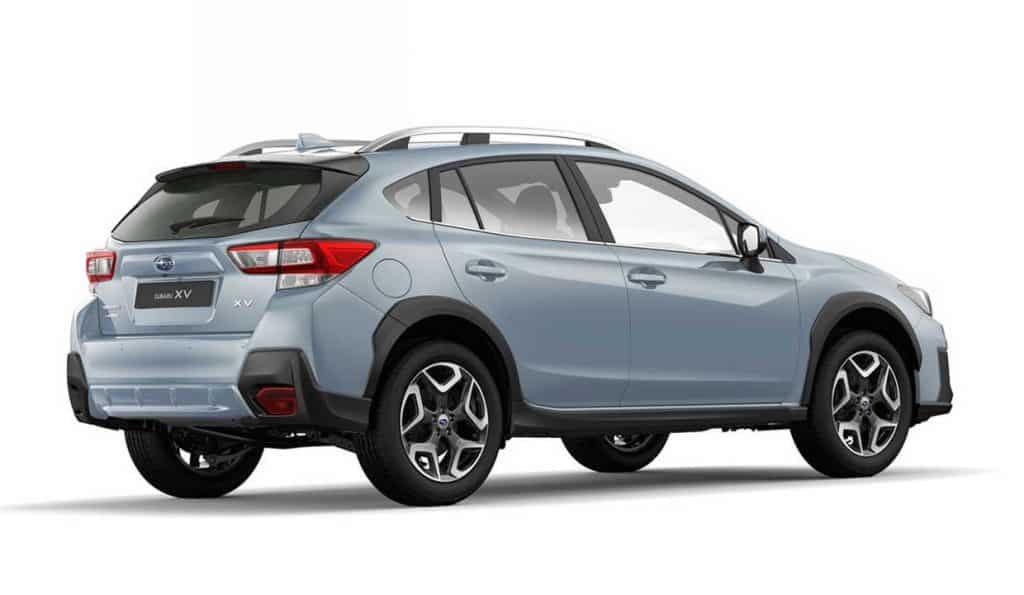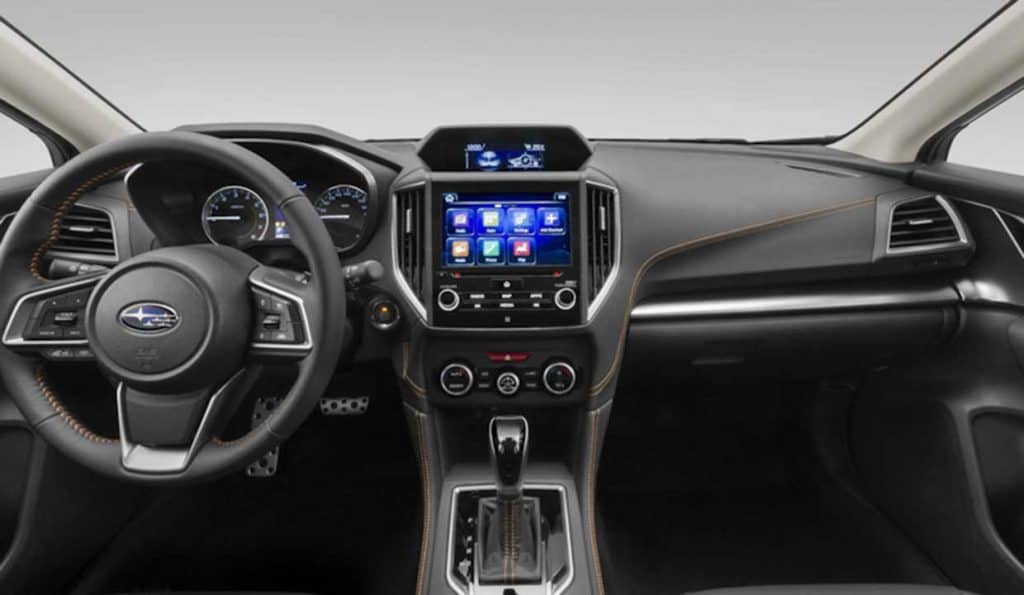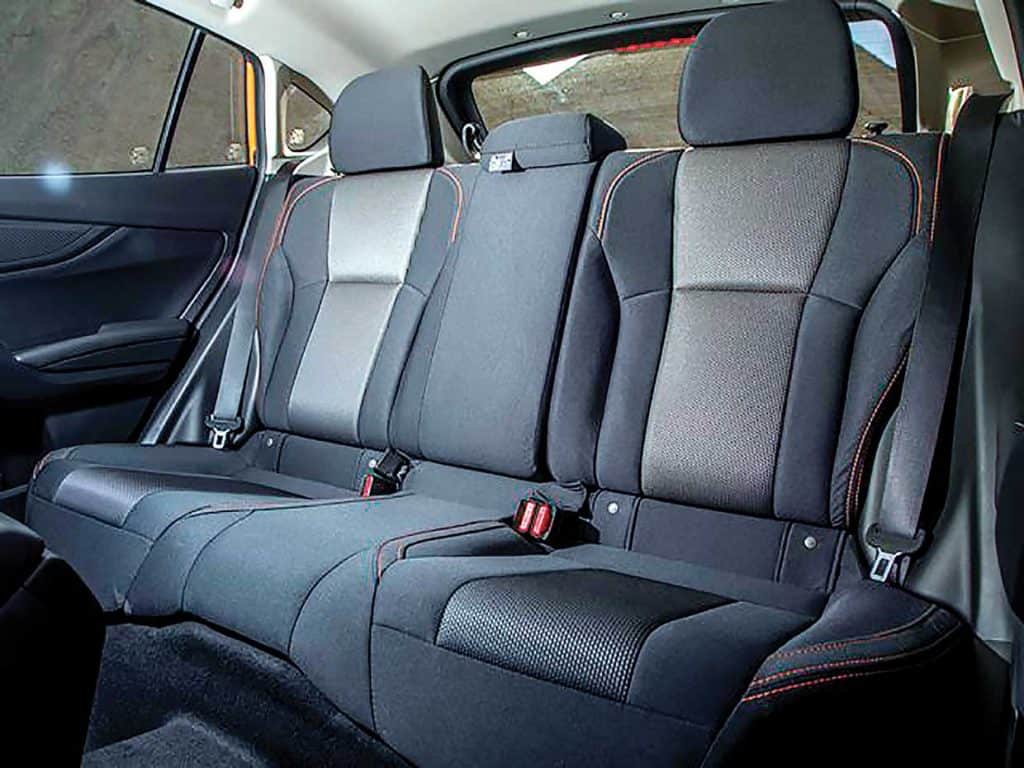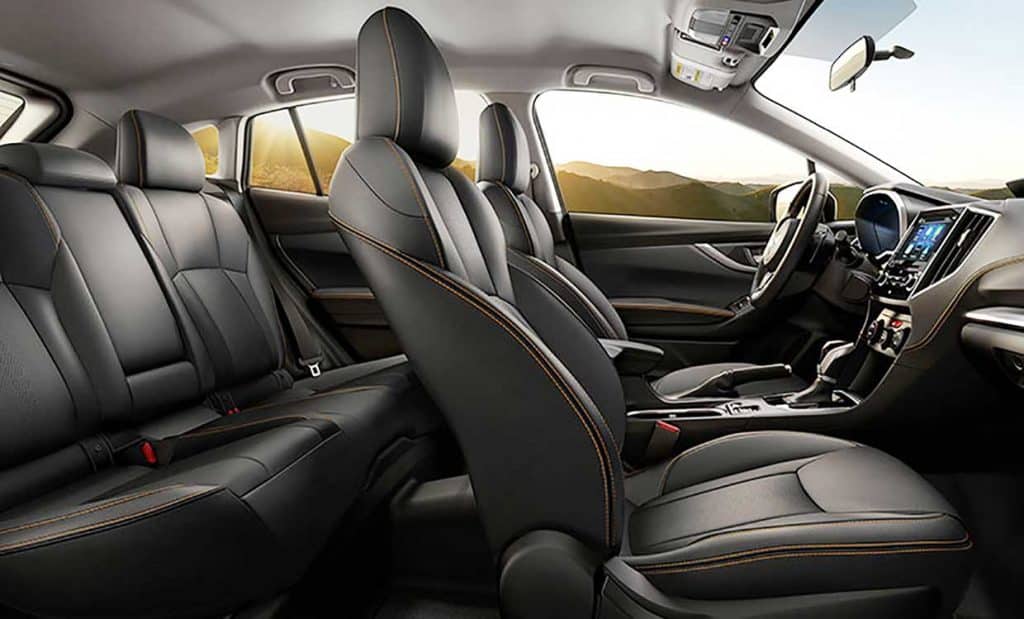The 2018 Subaru XV doesn’t really stack up if one were to base everything on looks. She’s basically the same recipe from before: a raised Impreza with additional cladding and roof rails—plus new chunkier bumpers and a unique grille. The 18-inch rims (with 225/55 tires) look a tad out of proportion—like it’s meant for a bigger SUV.
The interior styling is once again largely identical to the Impreza with the only difference being in details such as the orange stitching on the dashboard and hexagonal perforation on the seats. This isn’t a bad thing, since the dashboard is more shapely and modern than the dated ones of previous Subarus while still retaining the brand’s knack of providing a simple user interface. The climate control is always adjustable via big knobs and buttons while the infotainment contains large shortcut buttons as well as physical knobs for the volume and tuning.

Perhaps the steepest learning curve here is mastering the Subaru XV’s multitude of LCD screens. However, after knowing which button or toggle switch controls which screen, it becomes second nature. The Starlink infotainment system itself operates much like a smartphone complete with gesture controls. Most of the time, it feels snappy although there are instances where it has noticeable lag, especially when Android Auto is used.
In terms of space utilization, there’s almost nothing to complain about the 2018 Subaru XV. There’s more head, shoulder, and legroom now with a wide range of adjustments for the driver. It makes finding a good driving position very easy. Having said that, the seats themselves could use better support. The same goes for the rear quarters which may have more legroom, but don’t excel in support. Also, the sunroof robs some headroom for the middle rear passengers.



The Subaru XV is now propelled by a direct-injected 2.0-liter motor also found under the hood of the Impreza. It makes slightly more power (156hp) with the same amount of torque (196Nm). And while it’s buttery smooth and whisper-quiet from the driver’s seat, it’s also oddly coarser and more clattery from the outside.
In terms of pace, it takes some wringing to extract the most out of the Subaru XV. Most of the power is available high in the power band that only foot-to-the-floor applications will result in a strong pace. And even then, the CVT takes a long time to get up to speed. Still, for most day-to-day driving, it’ll do. Driven sanely, it’s a smooth operator with a good, perky pickup. It’s also very quiet, with just the roar from the Bridgestone Duelers making its way into the cabin. Despite the increase in size and equipment level, fuel economy has largely unchanged from before: 8.58 km/L (average speed of 15 km/h).
While the Subaru XV could use more grunt, one thing it gets right is the handling. Thanks to a brand-new platform, it feels tight with a body free from rattles or shakes. The ride quality itself is very good, muting all small bumps and reducing large ones to minor hiccups. The only drawback here is a hint of floatiness and some noticeable body roll. With a quicker steering rack (and all-wheel drive), it also corners very well with a high degree of precision and grip. Sadly, steering is also devoid of feedback, feeling too light and artificial even compared to the Impreza it’s based on.
Priced at P1,668,000, the 2018 Subaru XV 2.0i-S is actually more expensive then the larger (but more basic) Forester 2.0i-L. Nonetheless, it’s actually well-equipped for the price. It gets 18-inch wheels, steering-responsive LED headlights, moonroof, leather seats with power adjustment for the driver, dual zone climate control, seven airbags, ABS, stability control, X-Mode, blind spot and rear cross-traffic alert, and a rear parking camera.
Other features are Electronic Brakeforce Distribution, Brake Assist, Anti-theft with engine immobilizer, cruise control, push-button start/stop, leather seats, 8-inch display audio system with six speakers and Aux/USB/Bluetooth/Apple CarPlay/Android Auto capability, steering wheel audio controls, Hill Start Assist, Active Torque Split S-AWD, and Subaru’s EyeSight suite of active safety technologies.
EyeSight differs from any other driver assistive technology in the market because instead of using relatively expensive technology such as LIDAR and millimeter wave radar, it uses a pair of color cameras giving it stereoscopic vision which allows it to perceive depth just like the human eye. Additionally, its placement—mounted inside the car on the upper edge of the windshield—reduces the potential for damage that could occur in bumper-mounted systems.
The video information relayed by the cameras is unwaveringly processed by the EyeSight computer, identifying things like other vehicles, obstacles, and traffic lanes. And unlike LIDAR which isn’t reliable in detecting pedestrians and cyclists, EyeSight can recognize them. It can even detect when the vehicle in front taps his brakes. The information is then relayed to the braking system and electronic throttle control, enabling EyeSight to mitigate or avoid a collision (including bringing the car to a complete stop) if the driver doesn’t take action. The EyeSight system also integrates adaptive cruise control, pre-collision braking, and vehicle lane sway and departure warning.
Overall, the Subaru XV is a solid crossover. It’s got a boatload of high-tech features, boosted further by usable space and good maneuverability married with crossover flair and comfort. Add the generous ground clearance and decent water wading depth, and it becomes an option for someone looking for a car that won’t quit when the going gets a little rough.

